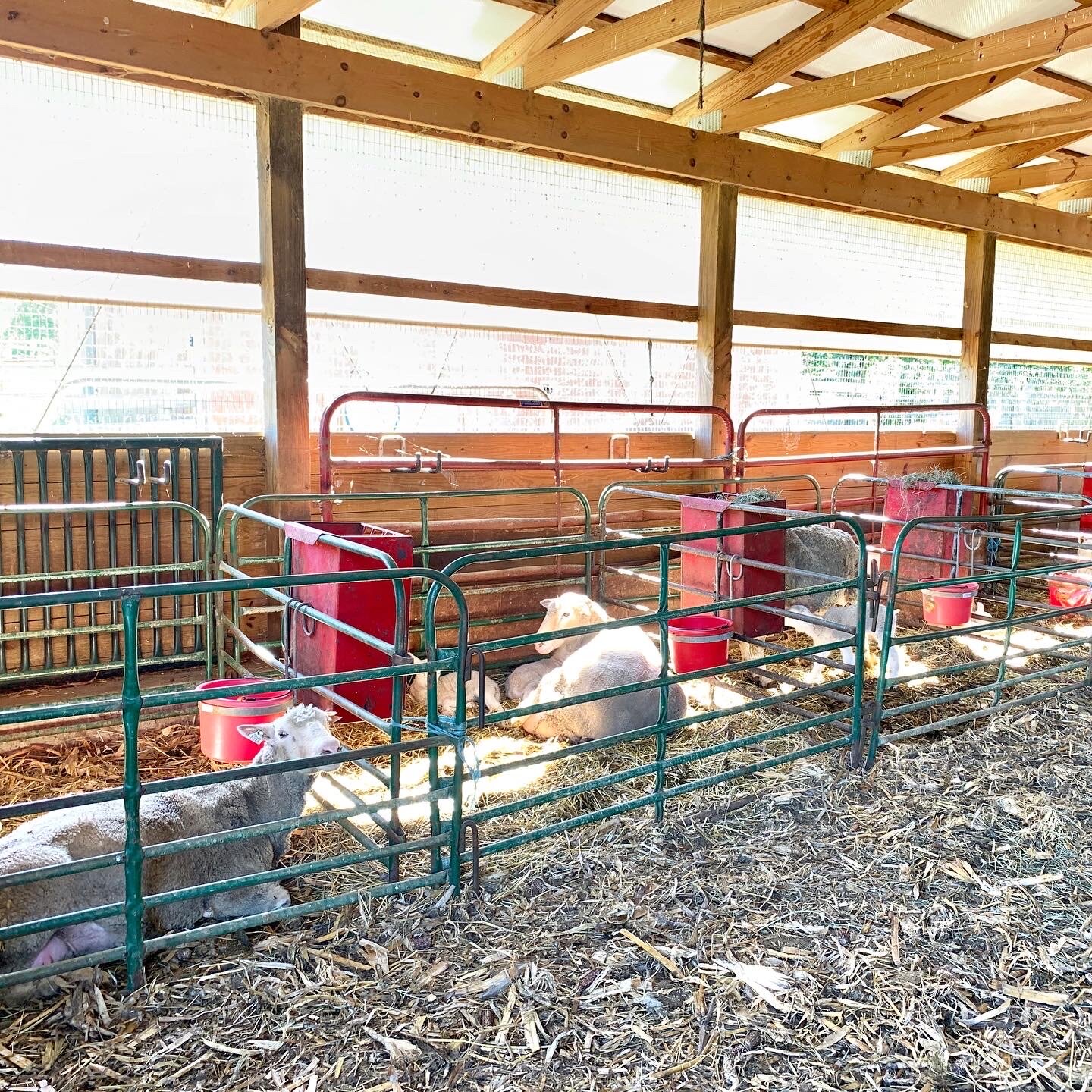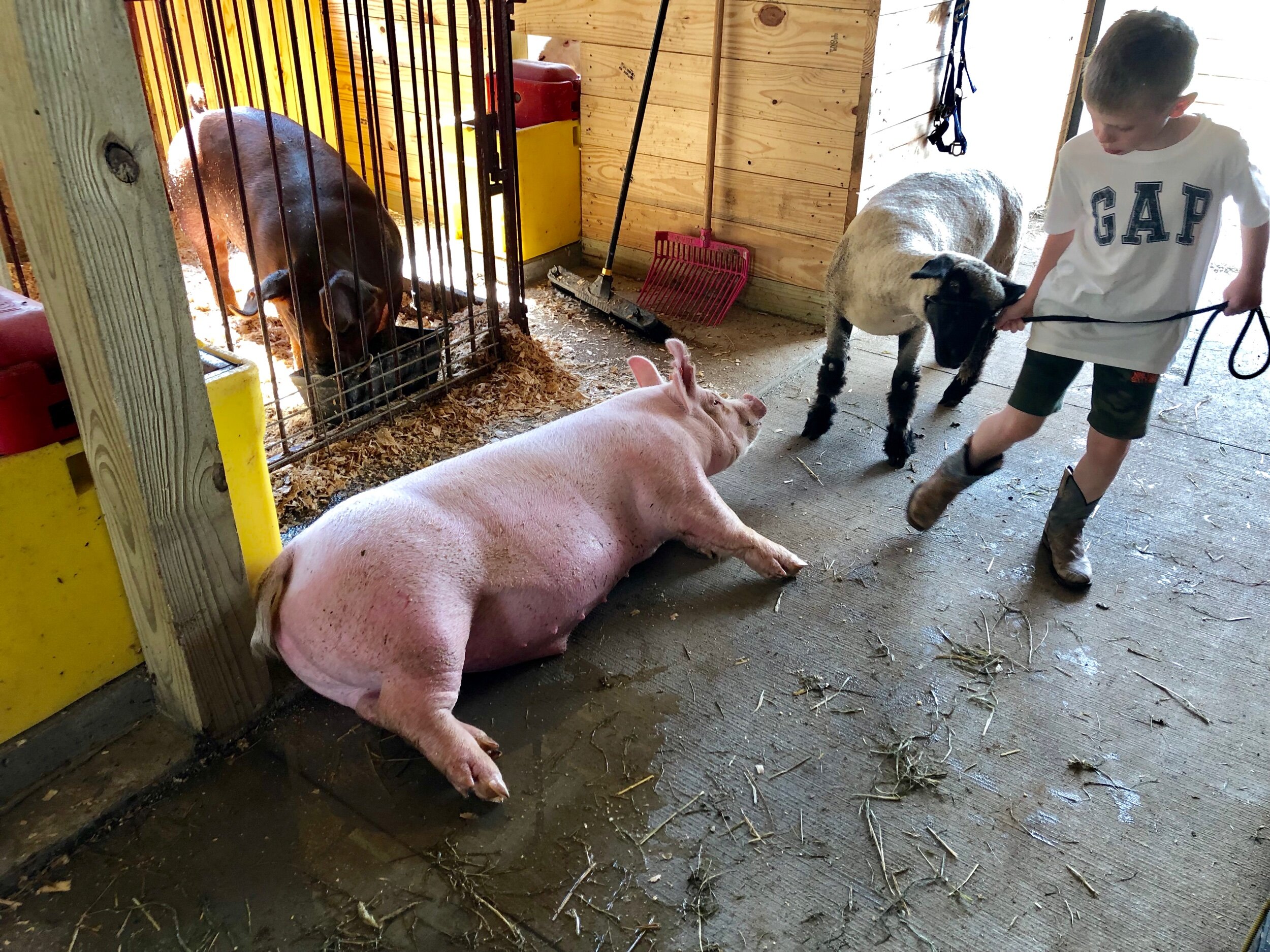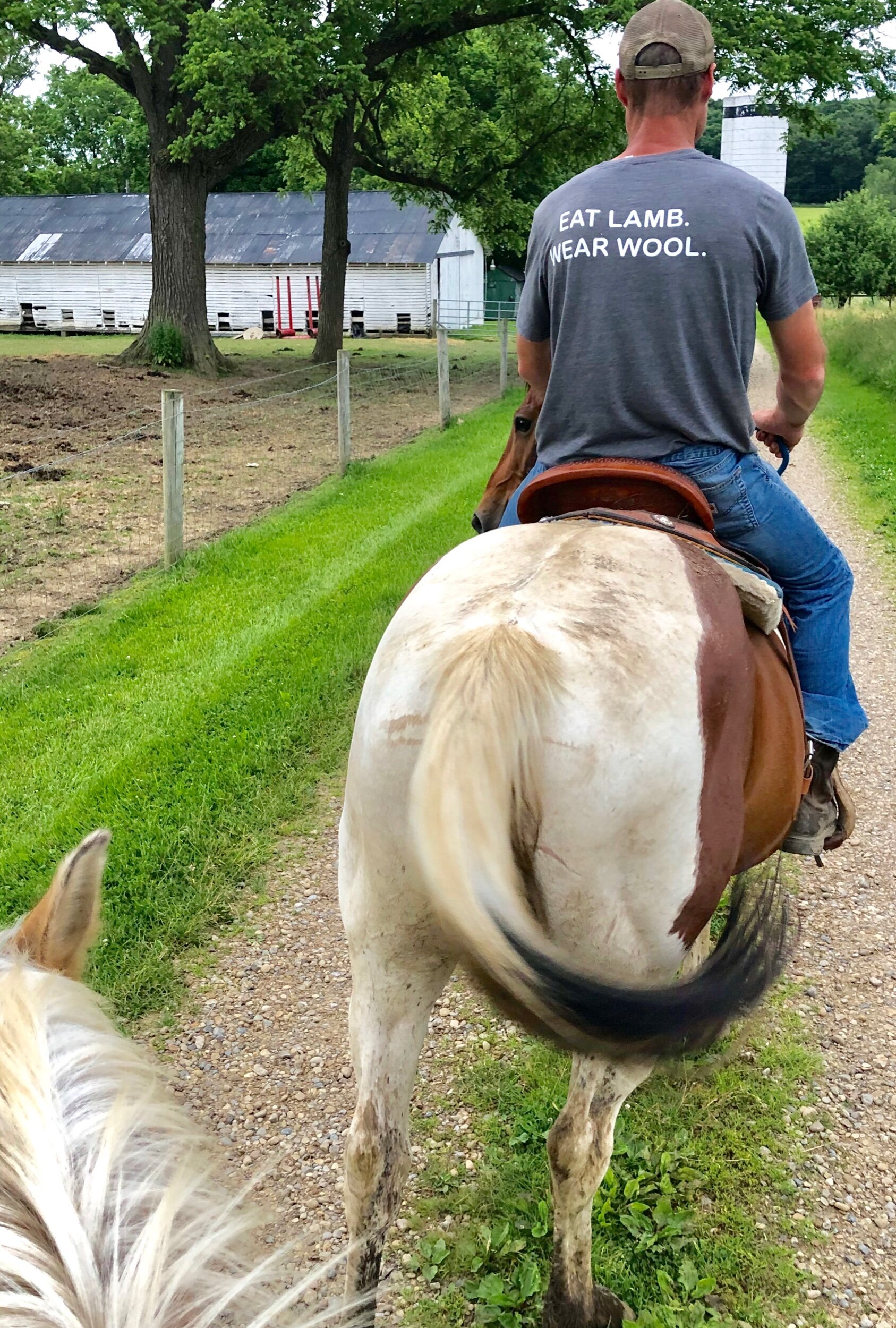“Agriculture is our wisest pursuit, because it will in the end contribute most to real wealth, good morals & happiness.””
Cattle Barn
Our cattle spend most of the year out on pasture, but when the pastures get too wet in the winter we bring them into our cattle barn. This gives them a place to bed down away from any harsh weather, but it also has a lot of open ventilation. This barn has a cattle chute where we safely work the animals, and it also has a large calving pen. We typically have calves in May to avoid any bad weather, and so the moms and calves can be on pasture, but occasionally we do need to bring in a cow and her calf for extra monitoring. When breeding and selecting cows to keep, we put a lot of emphasis calving ease, milking ability, weaning weights, and calm/docile cattle.
Lambing Barn
This is the heart and soul of DB Farms. Our 200 ewes work on an accelerated lambing schedule and have their lambs here in January, May, and September. Before each lambing, we ultrasound the ewes and move the pregnant ones into this lambing barn to get them ready to have their lambs. They have access to the inside of this barn and also to an outside pastured area where we feed free-choice wrapped hay in the winter. They are given grain and dry hay and checked around the clock for new lambs. Once they have their lambs (usually twins, but sometimes as many as five!) they are moved into small pens called jugs where they are left to bond with their babies and to establish a good feeding routine. We check to make sure the lambs are eating well, that the ewe has enough milk, and that everyone is healthy before returning them back into the flock. They remain here for 60 days before we wean the lambs and move them on to the finishing areas.
weaning barn
This is where we take the lambs after they have been weaned so they can continue to grow. We renovated the bottom of the original farm bank barn, (built in 1900) opened it up to allow for adequate ventilation, and built feeder space through the entire barn. The lambs have access to pastures as well as plenty of feeder space for all of them. We prefer to finish our lambs on a high quality mix of both grass and grain, but with this barn and pasture setup, we also have the option to finish them on only 100% grass for customers who ask for it. We also use this area to feed our replacement ewe lambs and the replacement ewe and ram lambs that we sell to our customers. We expect our ewe lambs to have their first lambs on their first birthdays, which means they need to spend their earliest months on high quality feed and in the best environment possible to optimize their growth.
Turkeys
We love our turkeys! It is also one of our favorite meats to eat. We eat more ground white turkey breast than any other meat that we raise on the farm, simply because it is such a healthy protein source and it is so easy to use in almost every recipe. We raise the turkeys from March - December in an open area where they have access to a pastured field as well as ample shelter. As pullets, they have a heated area in the barn where they can stay warm and dry, only venturing outside during the daylight hours so hawks and other prey don’t catch them. Then as they grow their feathers, they are free to roam as they please eating what they find in the pasture while also eating food provided for them in the barn. Most visitors to our farm are surprised to find out how friendly the turkeys are - they are very social birds that love to see what we are doing and love to follow our kids around. Our oldest son especially loves the turkeys, and it isn’t unusual to find a turkey or two next to him while he’s playing on the farm!
4H Barn
A tour of our farm wouldn’t be complete without a stop in our 4H barn. Our kids spend hours in this little barn feeding their animals, cleaning their pens, measuring their feed, weighing them, and working on showmanship. We believe they have learned more from their summers in this barn than we could ever teach them ourselves, and we are so thankful they have this area. One of our favorite sayings around here is an old farm favorite - we don’t eat until the animals have eaten. So, early every morning and every evening, you will find this barn full of kids working hard and learning the value of hard work. And the best part is, they love it!
Maple Syrup
One of our favorite things to make (and eat!) here on the farm is maple syrup! We tap approximately 30 trees each winter and keep our evaporator running from sunup until sundown. We use buckets to collect the sap every day and then pour it into large barrels attached to our side-by-side. It is a 6 seater, so we have room for everyone to help while staying warm. We then keep the evaporator full of burning wood and we take turns keeping it full of sap. We finish off each maple syrup season with a breakfast for all of our family and friends - it is a tradition that we all love and look forward to!
The Horses
Everyone loves the horses! Our horses Julep, Whiskey, Charlie, Maple, and Mayberry are ridden by all of us for both fun and work. We couldn’t have asked for a better group of horses for our family. All of them went through a rigorous horsemanship program before coming to our farm, so they are very safe and very tolerant of strange animals, people, sounds, and vehicles.
The farm has acres of trail riding through fields, woods, and dirt roads where our kids learn basic horsemanship. We also use the horses to move the sheep and cattle between pastures during the summer months. It is important to us that our kids understand true horsemanship and understand how to work with a horse’s mind as well as his body to keep him soft and ready to respond to cues. Our horses enjoy having jobs to do and in their down time have plenty of open land to explore together.
The Pasture Land
The land and pastures on this farm are so important. Our livestock spend a lot of time grazing and depend on high quality forages in order to grow to their top potential. In order to keep the land healthy and performing well, we do a lot of rotational grazing, we spend a lot of time looking at the health of our soil at and below ground level, and we regularly consult with some of the top agronomy experts in the country. It is important to us that we leave our land functioning at an even better level for future generations.
We currently have pastures in 3 different areas that we use for the different livestock. Two of the areas are devoted to sheep only, and they are both divided into small areas that the sheep are moved through every 5-8 days. The third pasture area is used by both sheep and cattle and is also rotationally grazed. We move the livestock either by foot or by horseback.

























